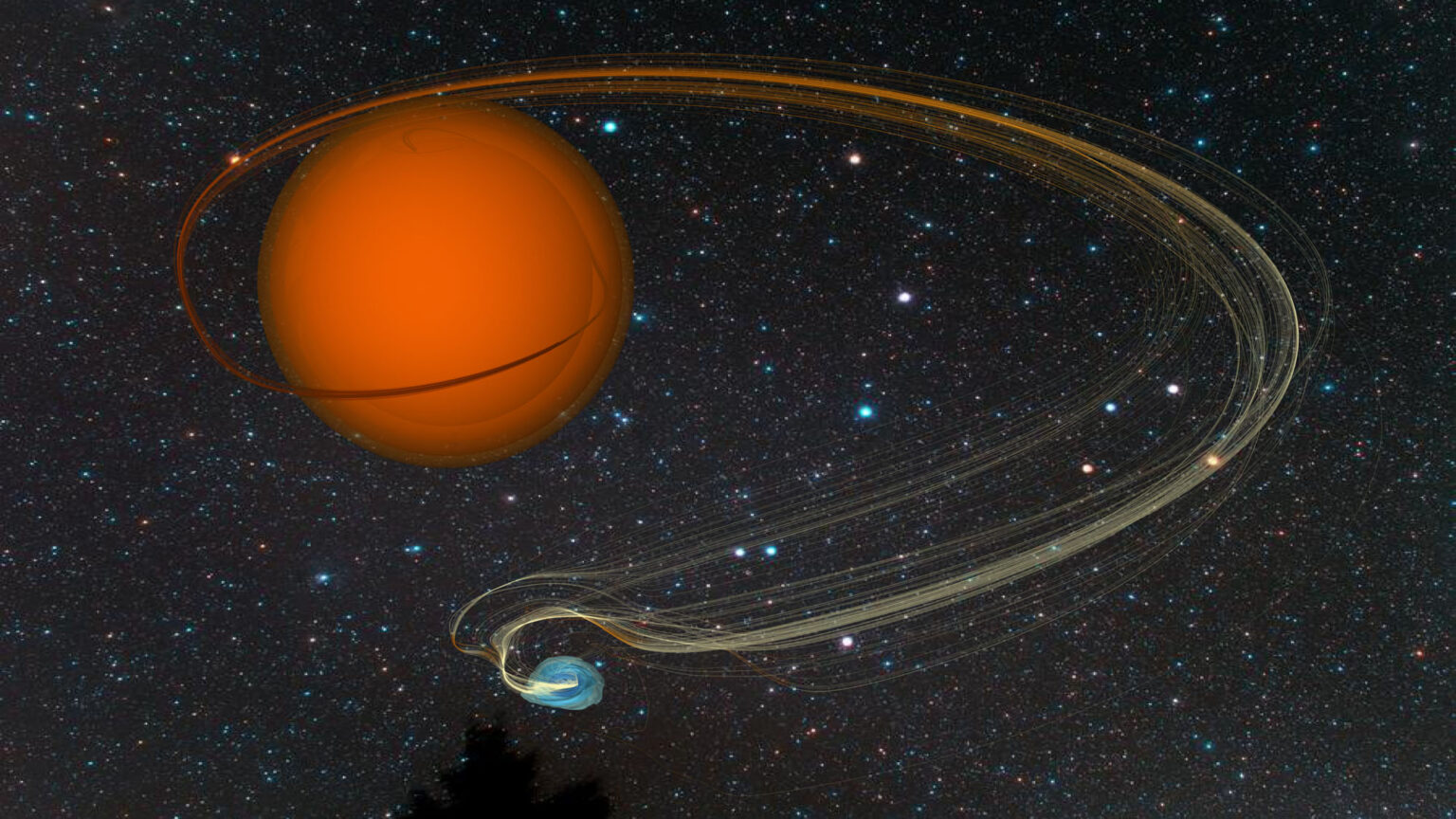Scientists studied the strange star TCP J1822 using the Himalayan Chandra Telescope. They made sure that it belonged to the so-called symbiotic systems and consisted of an extremely hot white dwarf and a red giant interacting with each other.

Amazing symbiotic system
Astronomers working with the Himalayan Chandra Telescope could explore the symbiotic TCP J18224935-2408280 system, also known as TCP J1822. It is located at a distance of 26 thousand light-years from us.
The system was discovered on May 19, 2021, when an outburst occurred in it. It began between the 13th and 16th of this month, gained strength for 5 days, and then faded for another 10 days. Further observations show that the system demonstrates long-term periodicity, and strong lines of neutral hydrogen, helium, and doubly ionized oxygen are present in its spectrum.
All this led scientists to believe that they were dealing with a symbiotic star system. It is a very short period in the life of binary stars and consists of two components: a hot white dwarf and a cold red giant. Matter is constantly flowing from the second to the first, which from time to time leads to new outbursts.
What did the research reveal?
A new study has allowed scientists to learn more about the TCP J1822 system. They used a powerful spectrograph mounted on the Himalayan Chandra Telescope. They found lines of neutral and ionized oxygen and helium that came from the hot component and titanium oxide coming from the cold one, which confirmed that this was indeed a symbiotic system.
In addition, scientists could determine the surface temperature of the hot component. It is equal to 100,000 K and is typical for white dwarfs. It is tiny, but the accretion disk around it is about 1,000 times brighter than the sun, even after the flare has completed.
It was also possible to determine the parameters of the red giant. Its surface temperature is 3,600 K. At the same time, the radius is 69 times larger than the solar one, and the luminosity is 700 times higher than this parameter for our luminary.
According to research, nova outbursts in this system are combined. It begins with the instability of the accretion disk. Then the outer shells of the white dwarf explode, and their expansion takes place. Scientists found that this occurs with a frequency of 631.25 days.
According to phys.org
Follow us on Twitter to get the most interesting space news in time
https://twitter.com/ust_magazine


